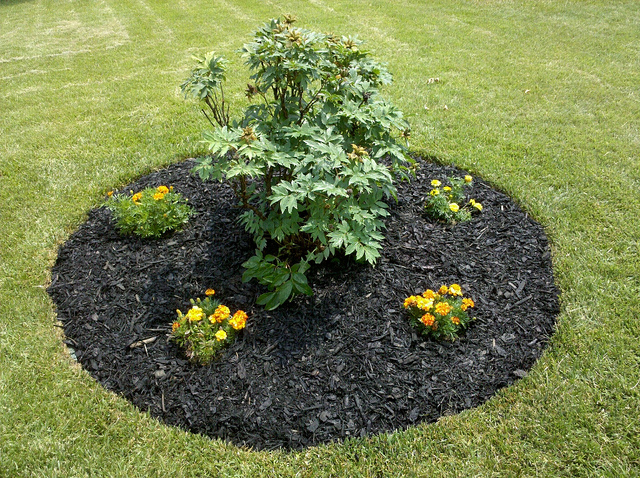Mulch : Pros and Cons

A mulch is a layer of material applied to the surface of soil. Reasons for applying mulch include conservation of soil moisture, improving fertility and health of the soil, reducing weed growth and enhancing the visual appeal of the area. A mulch is usually, but not exclusively, organic in nature. It may be permanent (e.g. plastic sheeting) or temporary (e.g.bark chips). It may be applied to bare soil or around existing plants. Mulches of manure or compost will be incorporated naturally into the soil by the activity of worms and other organisms. The process is used both in commercial crop production and in gardening, and when applied correctly, can improve soil productivity. Living mulches include moss lawns and other ground covers.
Benefits of Mulching Reduces weed growth by keeping light from reaching the soil surface. It reduces water loss from the soil surface, which helps maintain soil moisture. It also moderates soil temperatures, keeping it warmer on cold nights and cooler on hot days. Protects bare soil, reducing erosion and soil compaction. Protects plants from the harsh conditions of winter freezes, thaws, and winds.
There are many other benefits of mulch: In winter, soil under mulch will be warmer than unprotected soil. This protects plants from the cycle of freezing and thawing (which can heave them out of the ground). Prevents crusting of the soil surface. Water moves more readily into soil covered with mulch instead of running off. Keeps soil from splashing onto leaves; keeping soil off leaves reduces the chance of plants getting fungal and bacterial diseases. Breaks down and feeds the soil (if organic mulch). Improves the structure of clay soils and the moisture-holding capacity of sandy soils. Slowly increases soil fertility (if organic) and may make micronutrients already in the soil more available. Warms the soil in spring, allowing the gardener to plant days or weeks before the soil would normally be ready. Keeps plants clean and off the ground, especially tomatoes and melons, to avoid plant disease. Limits the chance of damaging trees’ trunks when mulch is placed around them instead of grass. Improves plant health and growth (due to fewer weeds and more consistent moisture and soil temperature). Makes gardens “spiffed up” and attractive, giving a uniform appearance and rhythm to garden design.
Disadvantages of Mulching - Although using mulch has many benefits, in some cases, its use can be detrimental to the garden: Too much mulch (a layer more than 3 inches deep) can bury and suffocate plants; water and oxygen can’t reach the roots. A layer of 2 to 3 inches of mulch is ample. Do not over mulch. Mulch can contribute to rotting bark if piled up around the trunks of trees and shrubs. Keep mulch 6 to 12 inches away from the base of woody plants. No more “volcano” mulching around trees! Keeping mulch away from the trunk discourages wood-boring insects, gnawing rodents, and decay. Mulch near plant stems is the perfect place for slugs, snails, tunneling rodents, and more pests to reside. Sprinkle wood ashes or diatomaceous earth around the base of precious plants to keep the slugs and snails at bay. Mulch can bake your plants with excess heat in midsummer if not done properly. Light-colored, wood-based mulches, like sawdust or fresh wood chips, can steal nitrogen from the soil as they break down. Counter this effect by adding a nitrogen-rich fertilizer, such as soybean meal, alfalfa, or cottonseed meal, to the mulch.
Conclusion: A layer of four inches thick is good enough to start with mulching. Newspaper mulch is ideal for protecting against weeds because it is decomposable. Water the soil to remove weeds easily. You can apply mulch at virtually any time of the year.